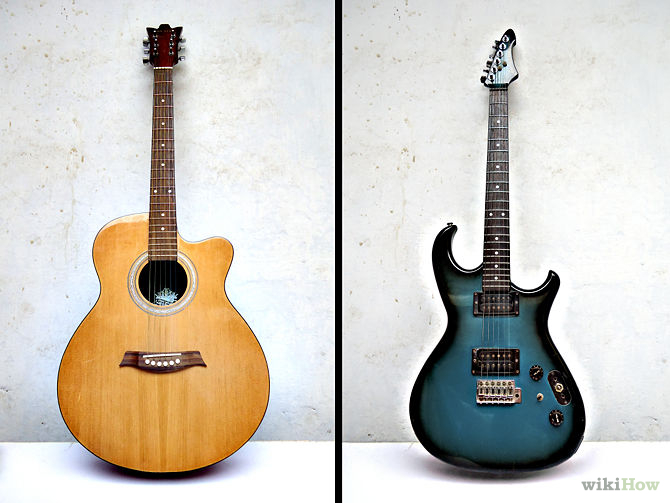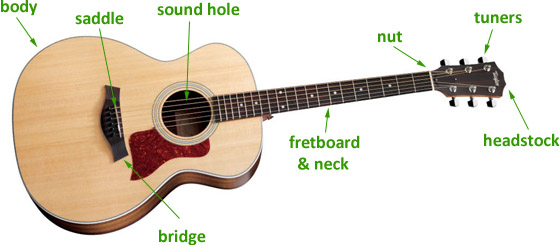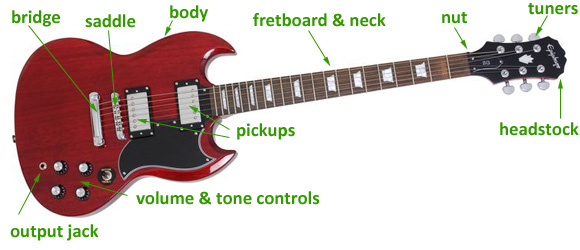Amplification of Sound
Now that we have a good understanding of how
sound waves work and how they relate to the
guitar, lets take a deeper look into how exactly
the sound is amplified in both acoustic and
electric guitars. You may think that all guitars
amplify sound the same way, but this is not true.
Each guitar has its own very distinct way of
amplifying sound.

http://www.wikihow.com/Make-an-Acoustic-Guitar-Sound-Like-an-Electric-Guitar
Acoustic Guitars
Acoustic guitars (like the one shown on the
left in the photo above) have a very
interesting way of amplifying the sound
throughout the instrument. When a string is
plucked at a certain frequency, it causes the
bridge to also vibrate at the same
frequency. As the bridge vibrates, it causes
the rest of the body of the guitar to vibrate
at that same frequency as well. As the body
vibrates, it causes compressions and
rarefactions (sound waves) to radiate
outwards. This compressed air that is inside
the body of the guitar is forced out through
the path of least resistance (the sound hole)
and thus much louder than the sound would have
been if it were only the amplification of the
string.

http://www.guitarfriendly.net/the-parts-of-the-guitar/
Electric Guitars
Electric guitars amplify the
sound in a very different way than
acoustic guitars do. First,
let's take a look at a diagram of an electric
guitar and analyze how the sound is produced
step by step.

http://www.guitarfriendly.net/the-parts-of-the-guitar/
Similarly to the acoustic guitar, sound
is ultimately produced by the vibration of
the strings at certain frequencies.
Although unlike an acoustic guitar, the
sound is not amplified by the vibration of
the body of the guitar. In an electric
guitar, as the name would suggest, the
sound is produced through an
electromagnetic process.
When a string is plucked and begins to
vibrate, the vibration is detected by the
magnetic field that is produced by the pickups
on the body of the guitar. These
pickups consist of some sort of magnet
(oftentimes either a bar magnet across all
the strings, or individual magnets at each
string) that produces a magnetic field.
These magnets have a coil wrapped around
them (usually around 7,000 times) which in
turn creates the magnetic field. As the
string is vibrating right above the
pickup, this causes a change in the
magnetic flux of the system. According to
Lenz's Law, if there is a change in
magnetic flux, an induced current will be
produced such that the induced magnetic
field opposes the change in flux. This
change in the magnetic flux through the
closed loop, generates a voltage (or emf)
by Faraday's Law. This produced voltage
sends the induced current to the
"amplifier" where the sound can then by
adjusted in a multitude of different ways.
Once the induced current has traveled to
the amplifier, it now can be distorted in
any way, shape or form that the musician
desires using a series of different
resistors, transistors, and many other
electrical circuitry. The current then
vibrates the diaphragm of the speaker
inside the amp at the original frequency
of the string to produce the same pitch.

http://www.guitaradventures.com/beginner-guitar-guide/electric
|